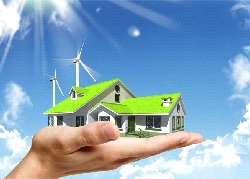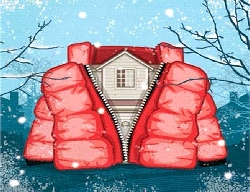 The environmental benefits of Passive and Net Zero buildings are numerous. These buildings promote and protect ecosystems, improve indoor air quality and conserve natural resources. When compared with conventionally-constructed buildings, energy efficient buildings consume 26 percent less energy, cost 13 percent less to maintain, have 27 percent higher occupant satisfaction and produce 33 percent less greenhouse gas emissions. Natural lighting and improved ventilation positively influence the health of occupants. They are less often sick, and far more productive.
The environmental benefits of Passive and Net Zero buildings are numerous. These buildings promote and protect ecosystems, improve indoor air quality and conserve natural resources. When compared with conventionally-constructed buildings, energy efficient buildings consume 26 percent less energy, cost 13 percent less to maintain, have 27 percent higher occupant satisfaction and produce 33 percent less greenhouse gas emissions. Natural lighting and improved ventilation positively influence the health of occupants. They are less often sick, and far more productive.
A Net Zero or Passive House building or home is a money making machine. Instead of spending money on it, you earn money with it. Net zero buildings consume little energy and at certain times of the year they return energy back into the electrical grid. A Passive House building is more reliant on conservation measures – like, high R-value insulation and windows and sealing.
Building efficient is more than just lower utility bills. Financial incentives from federal, provincial and municipal governments and banks can save or even make you money. Whether you are buying or renovating, check with your financial institution to find out about their “build green” incentives. You can use these incentive dollars to pay down your loan or invest in savings to enhance your financial portfolio.
According to a recent survey, 40% of Ontario homebuyers were willing to invest an additional $10,000 for an energy efficient home. Energy efficient residential and commercial buildings retain higher resale values. Savvy buyers know their utility and maintenance costs will be lower than non-green buildings, consequently they are willing to pay more.
 When it comes to energy efficiency, the structure’s envelope is priority one. The three basic elements of a building envelope are a weather barrier, air barrier, and thermal barrier. The building envelope; walls, roof and foundation encompass every part of the building. It separates inside conditioned space from the outside elements. The investment in a quality building envelope is a one time investment and constructed properly, it rarely requires maintenance.
When it comes to energy efficiency, the structure’s envelope is priority one. The three basic elements of a building envelope are a weather barrier, air barrier, and thermal barrier. The building envelope; walls, roof and foundation encompass every part of the building. It separates inside conditioned space from the outside elements. The investment in a quality building envelope is a one time investment and constructed properly, it rarely requires maintenance.
Starting with the basement foundation, the building envelope should be viewed the same way you would any financial investment, invest money now to get more back later. A well “weatherized” insulated home will cost a little more up front, but you’ll receive significant savings from lower utility bills. Keep in mind, by choosing a better insulated home, the monthly savings on utilities may match or exceed the added mortgage payment cost. In most cases there is no payback period at all, you are simply diverting your financial responsibilities. For example; say you invest an additional $7,000 in weatherizing (insulating) your building envelope and the investment saves you $40 a month on your utility bills. Based on a 25 year mortgage at 3% the additional monthly mortgage payment would be $33.19; which would equate to saving $6.81 per month on your overall costs. Not only that, your home or building will provide superior comfort and health benefits and be more valuable when you go to sell it. How much more valuable; up to 9% according to a recent survey. Check with your financial institution and government agencies to see if there are incentives for building green – there usually are. It doesn’t cost more to build green, it pays to build green.
Click Here to learn more about how to design a green home.
